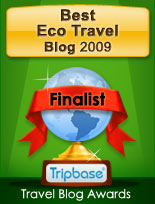
I think I have finally found the ultimate natural travel destination and the unexpected result is that my conscience is now fighting a theoretical ‘tug-of-war’ between the little voice that says ‘tell the world about it’ and the other that thinks ‘they’ll only go there and spoil it’. So what to do… part of me is so delighted at finding one of the true final frontiers of natural wonder and the other is worried that over time it might become little more than the latest mass-tourism destination. All things considered I think that if people have made it as far as this blog, they must also be the right ‘sort’ to make this decision by themselves.
This destination is far away, it is undoubtedly expensive to get there as well as physically tasking. Interminable hours spent on planes, days in constant motion, and crossing a whole bunch of time-zones means that reaching these small land spots in the ocean is not going to be for everyone. The name of the islands evoke stories of whalers, explorers, sailors and one of the most famous naturalists to ever live. Their appearance is like nothing else on earth, a jumble of volcanic geology, sharp black rocks and white sandy beaches with areas so lush they could easily be mistaken for the jungles of South America. Yet, none of the above attractions are even close to the real reason why people come here; they come here to see the animals. If you haven’t guessed it yet the islands are the Galapagos, one of the most incredible examples of natural diversity known to man. Hundreds of species seemingly working in unison and carrying no preconception - and therefore no fear - of humans allows for some incredibly close contact with specimens that appear too docile to be described as wild animals. 
A trip to Galapagos is a ‘once in a lifetime’ affair, or at least this is what it should be. Already now, the feeling that there are too many visitors is felt from the moment you land and you start to meet groups waiting for transport to their nearby boats. The national park has imposed limits to incoming visitors and immigration is strictly controlled ensuring that the islands are not destroyed by humans, but whether that limit is already a little too high is another matter. Official figures put visitor numbers at 180,000 in 2009 which is a huge increase when compared to the 5000 or so people that would come here in the 70’s. Of course the income produced by visitors is plowed back into the local economy and park conservation efforts, and the array of strict park rules imposed by officials should ensure that a balance is kept. In some respects this is a great place to see tourism and conservation in action together. Despite the fact that there is still a lot more that could be done, there are strong underpinnings to make it work. For some, these islands and their continued protection are a parable for our entire planet and our administration of it.
Anyway, back to the animals… Nowhere else on earth can you sit quietly on the beach and enjoy the playful dance of sea lions, the majestic flight of huge colonies of sea birds and then stroll inland to see some of the most incredible creatures that live here: the giant tortoises. It is the closest you will ever come to being in a National Geographic documentary!
All trips here have to be part of an organized cruise. Each boat is different in size and style but the smaller ones are preferable for environmental as well as qualitative reasons, there are even sailing ships going around the islands. When you pick your provider make sure you carefully research and pick the one you feel has the strongest commitment to the environment and the local population. A full list can be found on the International Galapagos Tour Operators Association website.
Once you are on a cruise the captain will have a detailed plan, imposed by the park rangers. Each boat is told exactly where to go and when. This system is devised to avoid island crowding and to play into the strengths of each vessel, yet another reason why a smaller boat is a good choice (they can get into places larger ones cannot reach).
Each day is filled with organized land excursions lead by expert local naturalists and with some time to snorkel and swim with anything from sharks and manta rays to penguins and sea lions. The time in between is usually spent on a beach walking and thinking about life in general. The meals on board give you a chance to chat about the day’s event with your fellow adventurers and to compare photos – which will inevitably feature hundreds of sea lions and blue-footed boobies! 
As a lifetime trip it really checks all the boxes: incredible scenery, wonderful local culture, unforgettable wildlife and a general feeling of seclusion that only islands this far away from civilization can give. My advice though is to always ensure that your trip is making the smallest possible environmental impact, no other destination is so capable of feeling it!

















No comments:
Post a Comment